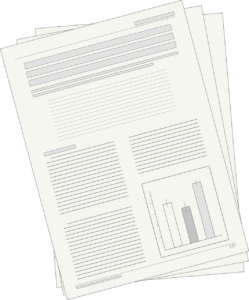[CFP] Humour and Self-Translation
 Call for Papers
Call for Papers
Humour and Self-Translation
Editors: Margherita Dore and Giacinto Palmieri
The volume aims to explore the self-translation of humour. Generally speaking, self-translation is described as a type of translation in which the translators happen to be the same people as the authors of the source text. It represents an atypical case which, as such, was somewhat neglected by Translation Studies scholars. More recently, however, self-translation has attracted a good deal of attention, as demonstrated by Gentes’s (2020) 212-page bibliography on this topic. Notwithstanding this, the self-translation of humour appears to be a remarkable blind spot. A text search for the word “humour” in the aforementioned bibliography returns only one match (Noonan 2013), searching for “humor” returns one more (Palmieri 2017a), while “comedy” returns three (Palmieri 2017a; Palmieri 2017b; Sebellin 2009; Palmieri 2018) and “comic” returns only one (Cohn 1961).
Another aspect that makes the research gap on humour self-translation so remarkable is that the translation of humour in general has also been the object of much attention, not least because it offers a wide range of challenges, spanning from dealing with wordplay to the importance of culture-specific references (Chiaro 1992, 2005; Zabalbeascoa 1996; Attardo 2002; Dore 2019). Moreover, the success or failure in humour translation is often constrained by the translation mode used (cf. for instance Zabalbascoa 1994; Dore 2019; Dore, forthcoming). Interestingly, many authors who have written on self-translation (e.g. Fitch 1988; Eco 2013) have stressed that self-translators enjoy a level of freedom greater than that allowed to allographic translators. Similarly, the challenging nature of humour translation makes the case of self-translation the more interesting and intriguing, as it often requires exercising great freedom in adapting the humours content to the target audience (as discussed, with reference to stand-up comedy, in Palmieri 2018). Therefore, observing specific cases of humour self-translation is likely to unveil specific characteristics of this process in different context (cf. e.g. Palmieri 2018) and of humour translation in general.
It is envisaged that the exploration of this fascinating phenomenon will further contribute to enhance the ongoing debate on the (un)translatability of humour (Delabastita 1996; 1997; Chiaro 2000; Dore 2019). Since the self-translation of humour can potentially cover several fields of enquire and application, as well as genres, an edited book can become a particularly promising tool. With these premises in mind, we would like to launch a Call for Papers to encourage scholars to give a contribution to mapping this problem space, by identifying instances of humour self-translation in their specific areas of competence, both in terms of language(s) and medium/ text type.
The papers will be peer-reviewed. Authors will be asked to send their contributions to both Margherita Dore (margherita.dore@uniroma1.it) and Giacinto Palmieri (g.palmieri@londonmet.ac.uk).
Timeline
30th June 2020 – Abstracts (300 words)
Notification of acceptance: 31/07/2020
End of January 2021 – Manuscripts of chapters (up to 8,000 words)
End of March 2021 – Feedback from editors/external readers
End of May 2021 – Final manuscripts
Length of contributions: 8.000 words
Please use British spelling.
Refernces
Attardo, Salvatore (2002) ‘Translation and Humour: An Approach Based on the General Theory of Verbal Humour’, The Translator 8(2): 173-194.
Chiaro, Delia (1992) The Language of Jokes. Analysing Verbal Play, London and New York, Routledge.
Chiaro, Delia (2000) ‘”Servizio completo”? On the (un)translatability of puns on screen’. In Bollettieri Bosinelli, R. M., Heiss, C., Soffritti, M. and Bernardini, S. (eds.) La traduzione multimediale: Quale traduzione per quale testo?,Bologna: CLUEB, 27-
42.
Chiaro, Delia (2004) ‘Investigating the perception of translated Verbally Expressed Humour on Italian TV’, ESP Across Cultures, 1: 35-52.
Chiaro, Delia (2005) ‘Foreword: Verbally Expressed Humour and Translation: An overview of a neglected field’. Humor: International Journal of Humor Research 18 (2): 135–145.
Cohn, Ruby (1961) ‘Samuel Beckett Self–Translator’, PMLA 76: 613–621.
Delabastita, Dirk (1996) ‘Introduction’, The Translator 2(2): 127-139.
Delabastita, Dirk (1997) ‘Introduction’. In D. Delabastita (ed.) Traductio: Essays on Punning and Translation. Special Issue of Target 12(1):161-166.
Dore, Margherita (2019) Humour in Audiovisual Translation. Theories and Applications. New York and London: Routledge.
Dore, Margherita (Forthcoming, ed.) Humour Translation in the Age of Multimedia. New York and London: Routledge.
Eco, Umberto (2013) ‘Come se si scrivessero due libri diversi [As if you wrote two different books]’ In A. Ceccherelli, G. E. Imposti, & M. Perotto (eds.), Autotraduzione e riscrittura [Self-translation and rewriting], Bologna: Bononia University Press, 25–30.
Fitch, Brian T. (1988) Beckett and Babel: an investigation into the status of the bilingual work. Toronto: University of Toronto Press.
Gentes, Eva (2020) Bibliography: autotraduzione/autotraducción/self-translation. URL https://app.box.com/s/iux0u31earrvgi5n3l32jev65i5a593e
Noonan, Will. 2013. ‘Self-translation, Self-reflection, Self-derision: Samuel Beckett’s Bilingual Humour’. In A. Cordingley (ed.), Self-Translation: Brokering Originality in Hybrid Culture. London: Continuum, 159–176
Palmieri, Giacinto (2017a) ‘Oral self-translation of stand-up comedy and its (mental) text: a theoretical model”. Humor. International journal of humor studies, 30/2, 193–210. doi: https://doi.org/10.1515/humor-2016-0092
Palmieri, Giacinto (2017b). “Self-translation and orality: the case of stand-up comedy”. Perspectives. Studies in translation theory and practice, doi: http://dx.doi.org/10.1080/0907676X.2017.1351457
Palmieri, Giacinto (2018) Oral self-translation of stand-up comedy: from the mental text to performance and interaction. Unpublished Doctoral Thesis, University of Surrey.
Sebellin, Rossana M. (2009) ‘Bilingualism and Bi-textuality: Samuel Beckett’s Double Texts’. In D. Guardamagna and R. M. Sebellin (eds.), The Tragic Comedy of Samuel Beckett “Beckett in Rome” 17–19 April 2008. Università degli Studi di Roma. Editori Laterza, 39–56.
Zabalbeascoa, Patrick (1994) ‘Factors in dubbing television comedy’, Perspectives: Studies in Translatology 2 (1): 89-99.
